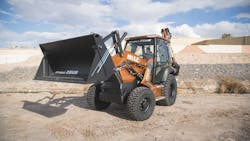Telematics Data Standard Sees an Update
An updated version of the ISO/TS 15143-3:2020 telematics data standard was approved, published, and posted on the ISO website Jan. 29.
The new version focused on bug fixes, corrections, and some clarifications to the first version, which was published in December of 2016. These improvements have helped provide some clarity to new adopters of the standards by removing some of the “gray areas” and minimizing areas that could be interpreted multiple different ways.
In addition to the clarification, a few new items were also added to the telematics data standard. Those include data element use cases, time series schema, and the biggest change, a process for adding new data elements.
The ability to add new data elements to the standard gives data providers and data consumers a way to propose and, if approved, include data specific to certain types of machines. An example of this, and one that a group of manufacturers of Mobile Elevating Work Platforms (MEWPs) had discussed, would be to capture the maximum (or average) a boom lift was extended on a given day.
This would provide end users, or rental companies, a way to understand if a properly sized machine is on the job site. If an 80-foot boom only extends to 25 feet consistently, the user may be able to rent a smaller machine or move the higher reach-capacity machine to an area where it’s needed.
Another advantage of allowing the standard to be appended to is the ability to adapt the available data to keep up with changes in the market. One of the data elements that is anticipated to be proposed in the near future, especially with the market entry of electric equipment, might be “battery health.”
Instead of equipment having an internal combustion engine (which there are currently multiple data elements related to), it may be powered by something else, such as a battery. Fleet managers and technicians will want to know things like if the battery is charged, similar to the existing data element of “fuel remaining.”
The updated version of the telematics standard can be downloaded off ISO’s website here.
Source: AEM
